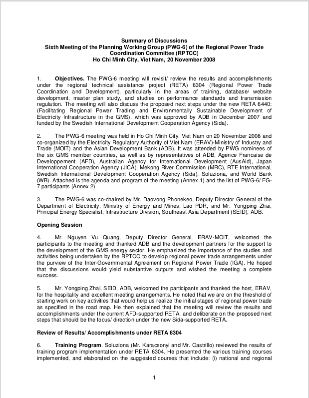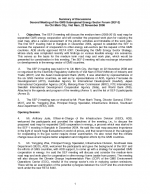
Sixth Meeting of the Planning Working Group (PWG-6) of the Regional Power Trade Coordination Committee (RPTCC-7)
The PWG-6 meeting will revisit/ review the results and accomplishments under the regional technical assistance project (RETA) 6304 (Regional Power Trade Coordination and Development), particularly in the areas of training, database/ website development, master plan study, and studies on performance standards and transmission regulation.









